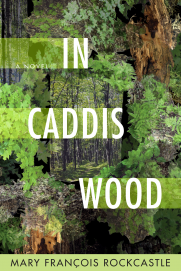Virgil Wander Leif Enger (2018)
The title character, Virgil Wander, narrates this enchanting tale, starting with his improbable survival from a catastrophic car crash: In a freak autumn snowstorm, Virgil sailed his Pontiac off a cliff and into 90 feet of Lake Superior blueness. It was an accident, the result of slick roads and white-out visibility. Or was it? Virgil is a conundrum, suffering from a traumatic brain injury that robs him of some memories and some elements of language, especially adjectives. He's dizzy and unfocused. Having met Death and walked away, he’s more appreciative of small wonders and less tolerant of bullshit. His name alone would have told us this. He does indeed wander in his post-accident days and weeks, but he is Virgil, the Roman poet of the Aeniad, who guided Dante. This modern-day Virgil now guides us to depths of understanding of the human condition.
Virgil Wander is a movie projectionist and part-time city clerk in fictional Greenstone, Minnesota, about as far north in the continental United States as you can go—even north of Duluth. The winters start in early October and are harsh, but the Lake Superior shoreline is spectacular. The inhabitants who remain in Greenstone now that its mining boom is long past are there because they crave the ruggedness, the quiet, and the slow pace, or maybe because they have nowhere else to go. (National reviewers of this novel who reside on ocean coasts clearly don't waltz to this leisurely beat, since they use the word "quirky" excessively and irritatingly.)
Into Virgil's post-accident world comes an elderly fellow from Norway, Rune, who is searching for Alec Sandstrom, who he just learned was his son. Problem is, Alec, a promising minor league baseball pitcher, flew off over Lake Superior in a small plane a decade before and never returned. Rune, whose name carries connotations of magic and inscrutability, is also a master kite builder who captivates the Greenstone natives with his whimsically festooned flyers that sail on the breezes and gales of this marvelous inland seaside. Many other characters join the ensemble, each swiftly and convincingly limned:
Alec's presumed widow, the luminous Nadine
Alec's teenage son, the loner Bjorn
Virgil's garrulous journalist friend, Tom Beeman
Virgil's enthusiastic co-worker Ann Fandeen and her sadsack husband, Jerry
mysterious Adam Leer, returned from Hollywood to Greenstone
ambitious snowplow driver Lily Pea and her young brother, Galen.
Novelist Enger skillfully intertwines their lives, in the way that lives naturally do intertwine, and crafts a plot that centers on the potential for revival of the ill-fated town and the gradual recovery of Virgil Wander from his near-death experience.
Good Lord, the folks in this novel have every manner of trouble accost them. Virgil himself was orphaned at 17 when his lay missionary parents died in a train derailment in Mexico. Other characters endure financial ruin, alcoholism, the bite of a rabid raccoon, or death by crushing (don't ask). A mist of magic realism suffuses the scene, as townspeople find happiness flying kites with Rune or watching classic movies with Virgil at the ramshackle but comforting Empress Theater.
Clearly, I loved both the plot and the characters of Virgil Wander, but the richness of Leif Enger's language stopped me in my tracks to read many paragraphs a second time, for the sheer joy of the words. Opening to a random page (9), I find this description of Rune: "He pulled a kitchen match from his pocket, thumbnailed it, and relit his pipe, which let me tell you held the most fragrant tobacco—brisk autumn cedar and coffee and orange peel. A few sharp puffs brought it crackling and he held it up to watch smoke drift off the bowl. The smoke ghosted straight up and hung there undecided." Of course I'm pulled to the smell of the tobacco ("brisk autumn cedar and coffee and orange peel"). But the verb "thumbnailed" tells you right away what kind of a guy Rune is, that he struck a match—a "kitchen match"—with his fingers. The puffs that Rune took were "sharp," and the smoke from the pipe didn't just rise, it "ghosted and hung there undecided," with a mind of its own to make up or not. Every page holds such images, seemingly tossed off. Aphorisms of startling clarity also jump out: “Memory's oldest trick is convincing us of its accuracy.” “I would say projectionists aren't more sentimental than blacksmiths except that we probably are.” (both on page 84)
You might put Leif Enger in the company of Richard Russo (reviewed here), for his bang-on portrayal of a decaying small American industrial town. You might compare Enger to Kent Haruf (reviewed here) for his laconic Midwestern characters. But for God's sake don't compare him to fellow Minnesotan Garrison Keillor, who doesn't reside in Enger's sphere of genius at all. Read Virgil Wander, definitely.










